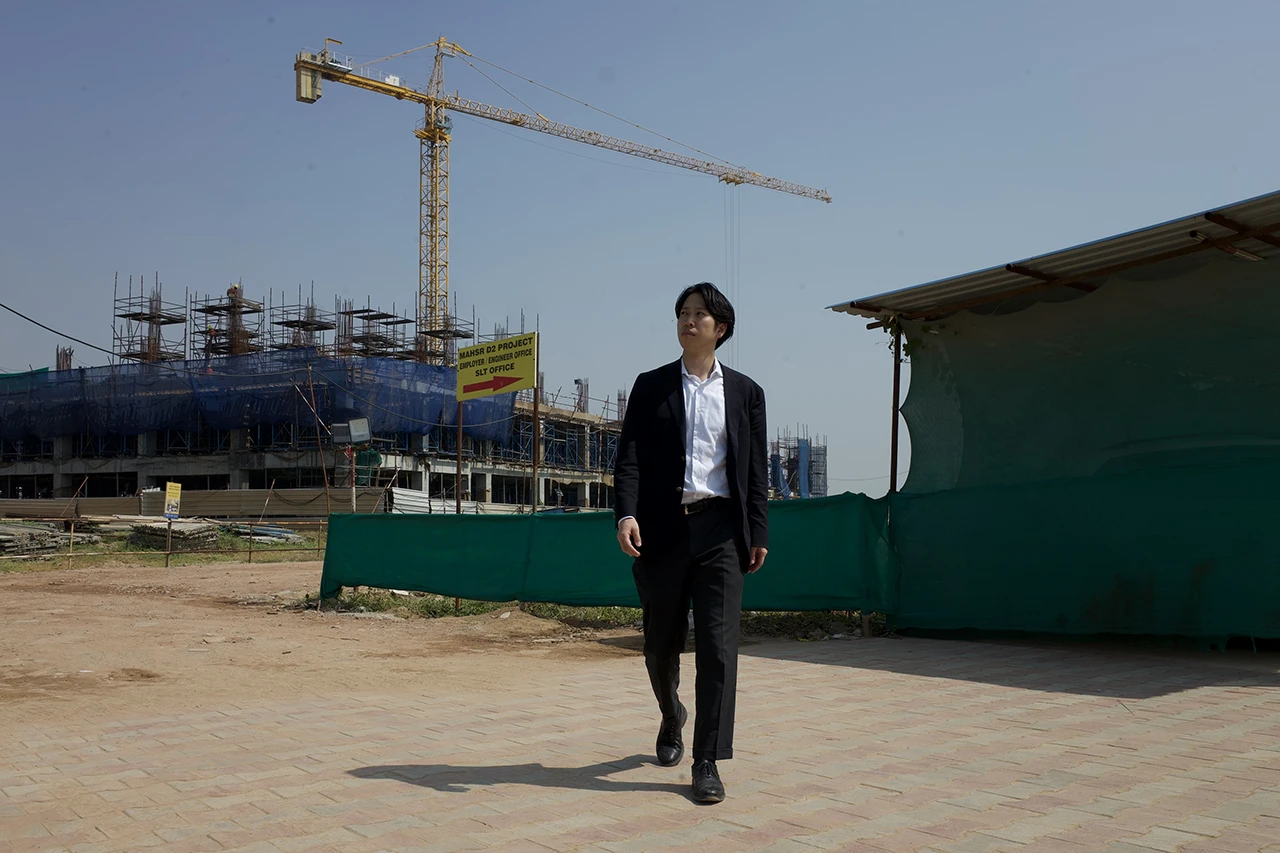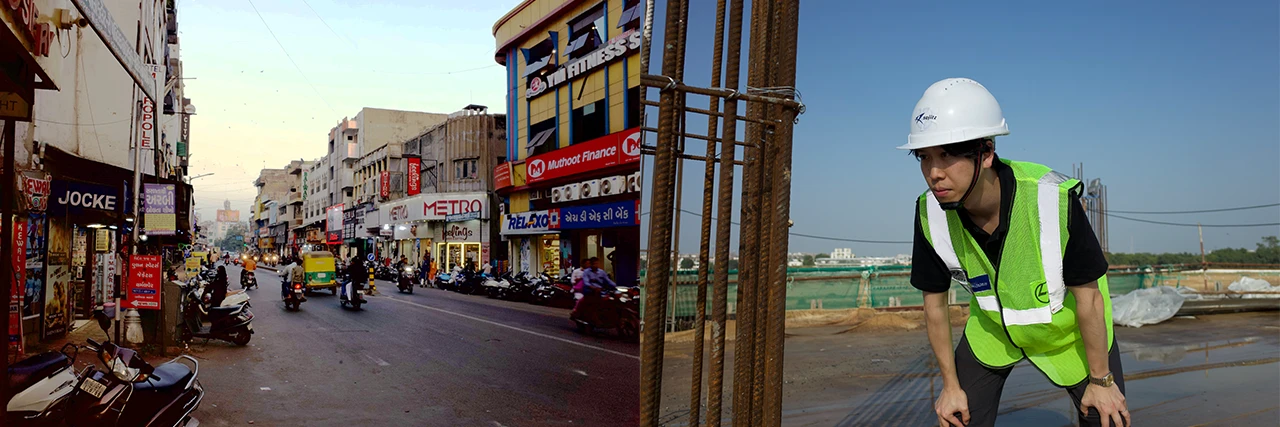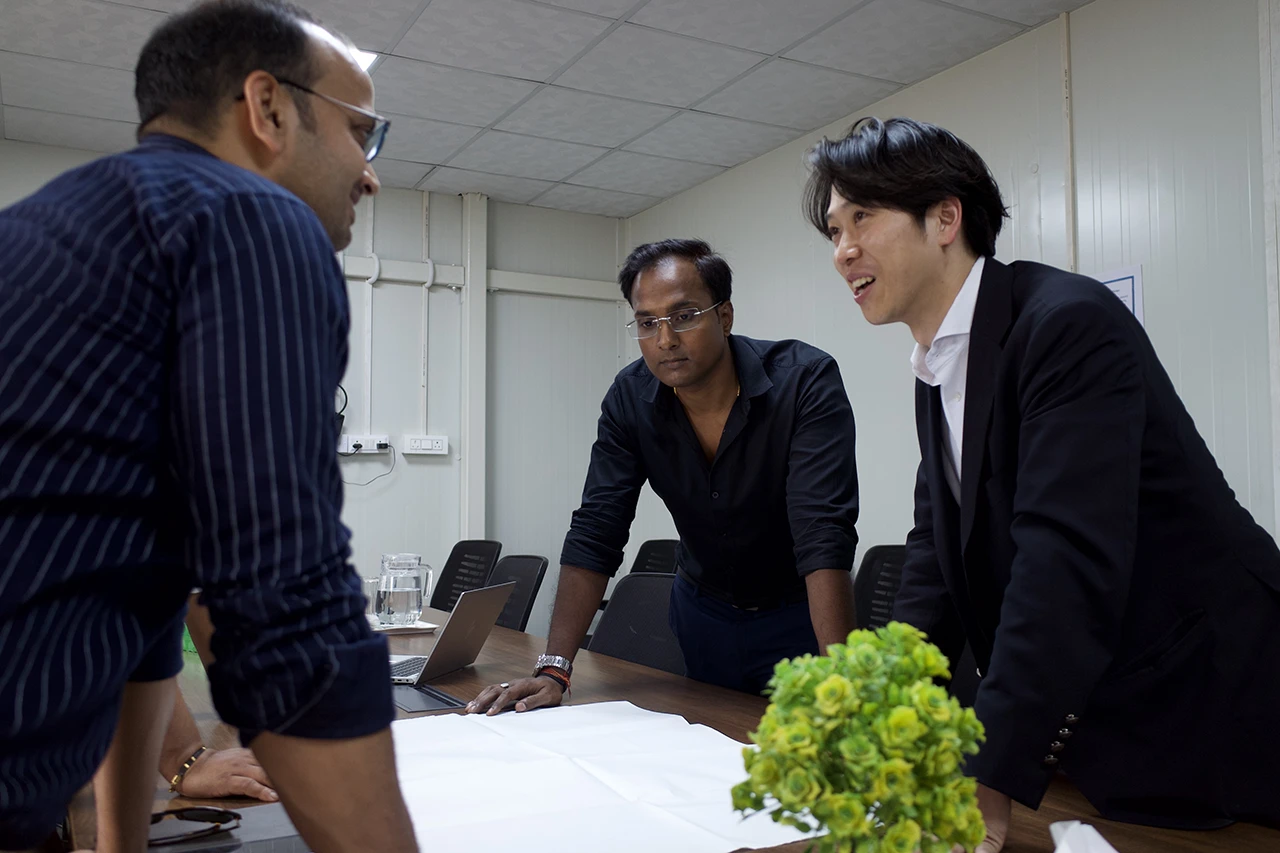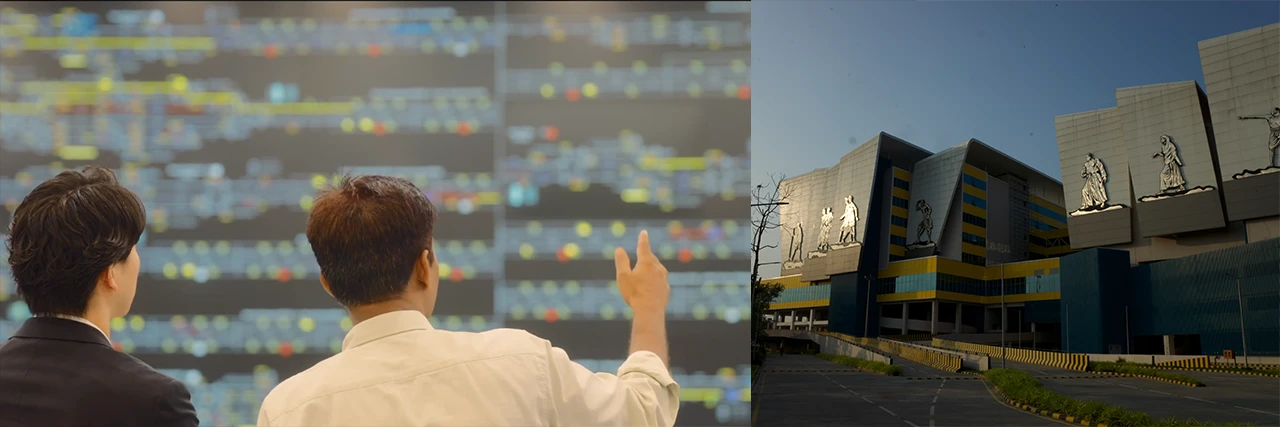Fulfilling Demand for Rail Transit Around the World
Seiya Nabatame / Transportation Section 1, Social Infrastructure Business Department Aerospace, Transportation & Infrastructure Division
(On assignment in Ahmedabad, India)
Nov. 8, 2024
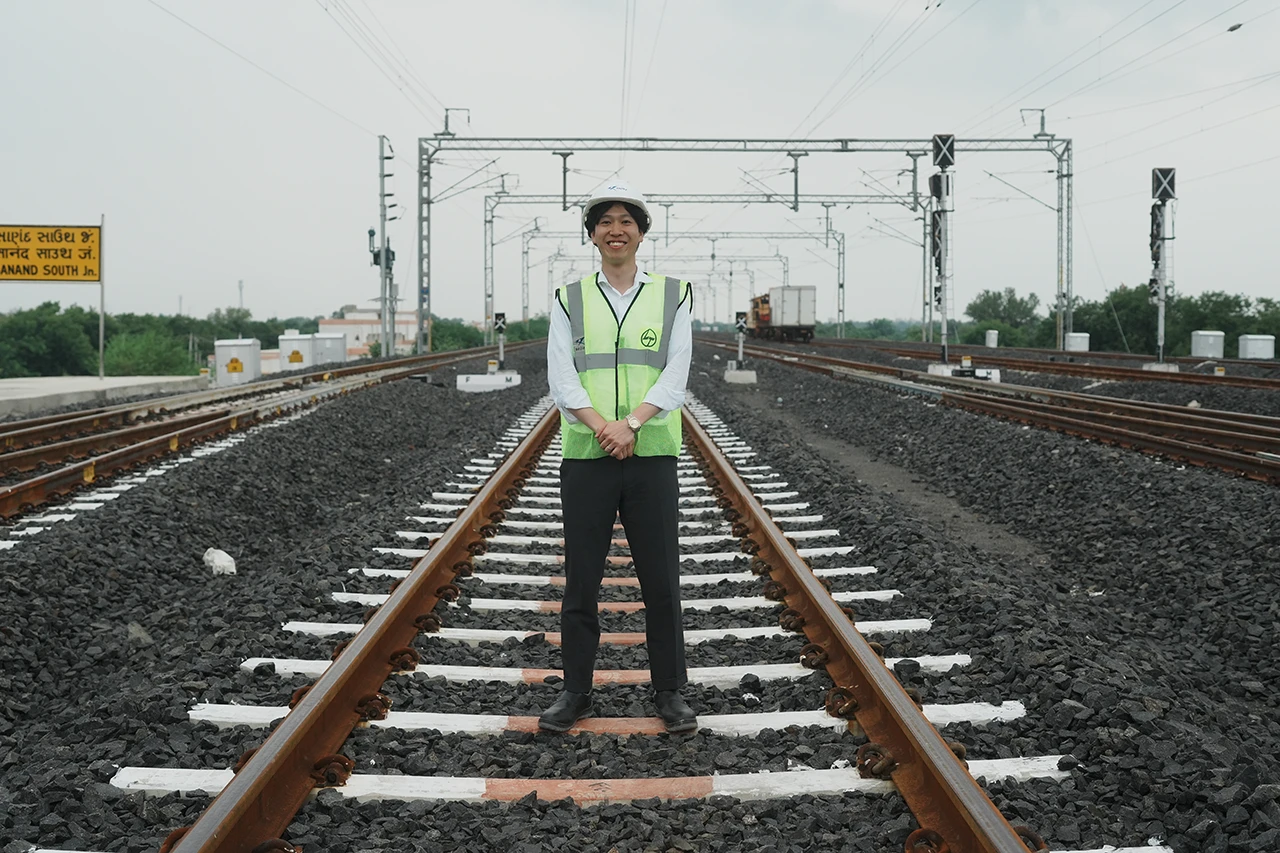
I have always loved vehicles like planes and trains since I was a kid. The sight of these massive hunks of metal machinery hurling along at high speeds inspired a great curiosity in me. I also loved building things, and I remember making my own trains, ships, and planes out of cardboard. I went on to study engineering in both university and graduate school, focusing on a discipline called transportation systems engineering, which is the study of the structure, physics, and mechanics behind the four key types of transport vehicle: trains, automobiles, ships, and aircraft. I studied a wide range of topics in school, such as the operating environment of each vehicle type, vehicle power and control systems, and methods for optimizing efficiency in vehicle structure and operation. After joining a research lab, I focused on the ways that air and water flow around transport vehicles as they move through space.
After my specialized study, I chose to start my professional career at a general trading company. I was drawn to the people at Sojitz who were working as unified teams to collectively create new business. I was also inspired by how employees took ownership of their work by formulating plans and seeing their projects through to completion to achieve a common goal. I knew that this was the way I wanted to work. During university, I also studied abroad in Toronto, Canada, and that was one experience that sparked my interest in working overseas.
After receiving an offer from Sojitz, I shared with HR that I was interested in Sojitz’s rail engineering, procurement, and construction (EPC)*1 business. I joined the company and was placed in the Planning & Administration Office for what is now the Aerospace Transportation & Infrastructure Division. Our office handled divisional accounting and provided support for strategic planning work, and the position gave me a bird’s eye view of the operations of the division’s numerous businesses. I was later assigned to our high-speed rail construction project in India and chosen as the lead project manager on the Japan side. Now, in my fourth year at Sojitz, I am on assignment as a trainee*2 here in Ahmedabad, India, to continue my work on the rail project. Through overseas assignment working with transport vehicles, I am one step closer to my dream career.
*1: EPC business: Large-scale projects that encompass the three phases of the development process, which includes engineering, procurement, and construction.
*2: For more details on the trainee program: Human Resource Management|Sojitz ESG BOOK|Sustainability|Sojitz Corporation
In light of India’s rapid population growth and economic development in recent years, chronic traffic congestion and air pollution have become critical social issues facing the country. As a solution to these issues, the Japanese and Indian governments began exploring the development of high-speed rail in India based on Japan’s high-speed rail system. Through a yen-based ODA loan from the Japanese government, India’s National High Speed Rail Corporation Limited has planned the construction of 508 kilometers of high-speed rail between the cities of Mumbai and Ahmedabad. Sojitz and its partner Larsen & Toubro Limited have been contracted for electrification works and the construction of a train depot, which is currently underway. The journey from Mumbai to Ahmedabad currently takes roughly seven hours via existing trains, but once complete, the high-speed rail will shorten the trip to about two hours.
Ahmedabad is one of the most dynamic and vibrant cities in India today. There are numerous shopping malls and apartment complexes currently under development, and many Japanese companies are working to open overseas offices and factories in the city’s suburbs. This rail project has a high profile throughout the country. The public is looking forward to its completion, and I joined the project with a strong determination to ensure its success.
The project first divided the entire length of the construction site into a number of smaller segments, and plans are drafted for each portion. Once the planning and design phase is complete, the civil engineering and structural construction work can begin. At the same time, a range of other jobs will progress simultaneously, such as design, construction, and shipment of materials and other related equipment. There are also many parties involved in this project, including both the Japanese and Indian governments, clients, consultants, partner companies, general contractors, and manufacturers—and I regularly communicate with all of them. To sum up my role, I work to grease the wheels and ensure that the project is progressing smoothly.
More specifically, I have four main responsibilities in my position here in Ahmedabad. First, I take part in discussions and deliberations with partner companies on the various strategic and operational decisions for the project. Second, I join business negotiations with the various companies involved in the project and assist in the contract closeout process. My third role is to act as a problem solver. Naturally, troubleshooting skills are essential for ensuring that a project runs smoothly, and I am constantly running around involving not only our local partners but also my Sojitz colleagues and managers as we work together towards a solution. Finally, my fourth role is to assist in communications about the rail technologies. We sometimes need to have technical discussions with representatives from our partner companies or India’s National High Speed Rail Corporation, and it’s my job to ensure that the finer details of the Japanese high-speed rail technologies are accurately explained to our Indian partners.
I have noticed that there are some differences between Japan and India when it comes to business practices and the way we approach a project. In Japan, we prioritize thorough and deliberate planning above all, deciding on a course of action in advance before moving forward. In India, they prioritize forward motion. They prefer to get started as soon as possible and continuously refine their approach as they go. I think there are pros and cons to both styles, but this discrepancy can end up causing distrust between parties, even leading to minor disagreements and disputes that stall project progress.
In these cases, I think it all comes down to communication. Drawing on my experiences working on this project from the Japan side, I speak directly and candidly with our onsite partners to explain the approach used in the Japanese business world and the importance we place on planning and preparation. I also work to share feedback from Indian staff onsite with my colleagues in Japan to ensure that we find a way forward that everyone can get on board with. Being here in India, I have unique access to the local site supervisors and project managers—professionals with expertise and experience far beyond my own. I am able to stay in constant communication with them as we work to understand one another’s perspectives and ultimately choose the best solution from among the many possibilities.
A representative from one of our local partners once said to me, “Wow, you do the work of about three people all by yourself!” The partner was referring not to my hours but to the fact that I wear many hats, including handling everything from contract negotiations to technical discussions and coordination with our many stakeholders. I remember feeling very pleased to receive the compliment. India has a vertically structured work culture, with each person fulfilling a distinct and specialized role, so the way that I handle such a broad range of responsibilities must have seemed quite unique to that colleague. I believe that by continuing to demonstrate my dedication to my work as I collaborate with our partners, I can foster relationships of strong mutual trust with each of our Indian counterparts.
For the immediate future, I want to see the completion of the construction project and the beginning of high-speed rail services. But that’s only the beginning. Going forward, I’d like to be involved in the entire value chain that underpins transport as an added value in society. For instance, I’m interested in the railcar maintenance business, a field where Sojitz is already active, as well as in the day-to-day operation of the rail system itself and other services that boost the convenience and accessibility of transit. I am hopeful that we will also have the opportunity to explore further transit-oriented development in the region, including other transit methods and businesses branching out from the train stations.
My dreams don’t end here in India. There are many countries with high demand for new transit methods, and I am ready to go wherever there is a need. For me, there is nothing more fulfilling than starting from scratch to bring the magic of transit to communities around the world.

